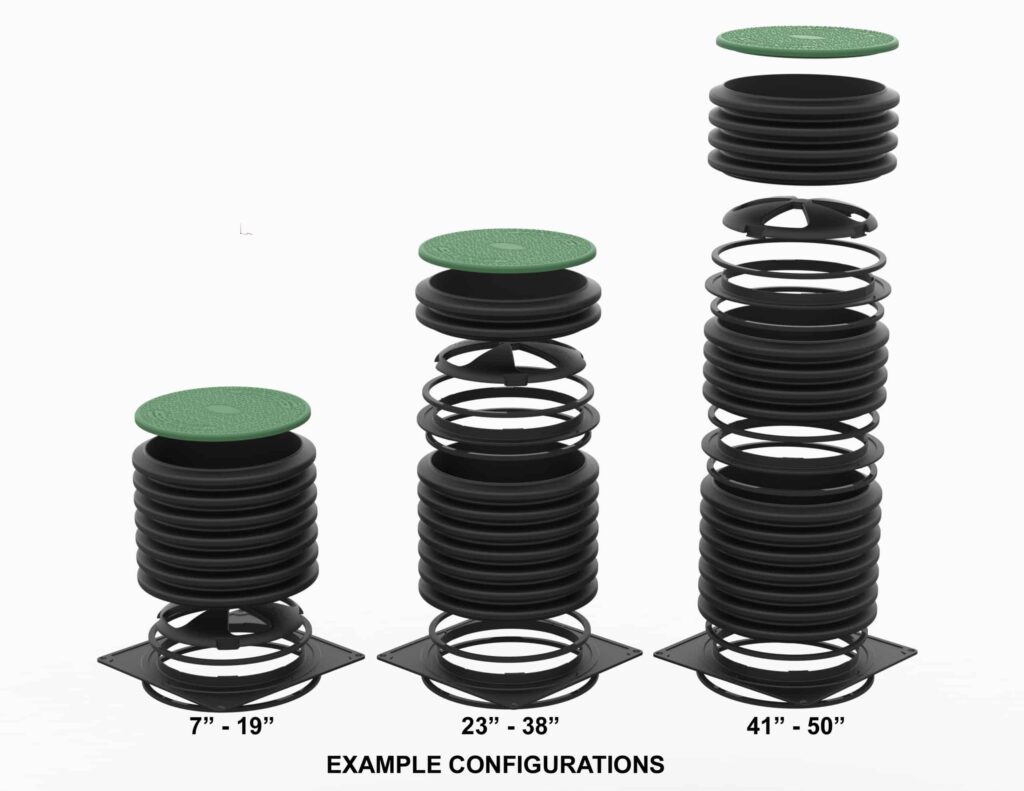About one-third of all residential properties in the United States do not connect to a municipal sanitary sewer system. Instead, they treat their own wastewater with an onsite wastewater system. The great majority of these onsite wastewater treatment systems contain a septic tank and a drainfield system – a septic tank system.
In general, septic tank systems are efficient, economical and safe when properly utilized and maintained. For most homeowners, the consequences of an improperly utilized or maintained system are costly; the system may fail or develop structural damage causing it to require replacement which can cost $15,000 or more. For most homeowners, periodic inspections and pumping of the septic tank is all that is required to keep the system safely operating at peak performance.
The inspection is often overlooked by homeowners but can detect early signs of septic system trouble or identify safety hazards that need to be corrected or eliminated. It is a little known fact that more than 1,200 people die each year in the United States due to drowning in a septic tank. Drowning is an awful accidental death in any case but seems so much more horrifying when it happens in septic tank, especially because they are almost always preventable.
If you are buying a home that uses a septic tank system for onsite wastewater treatment, make sure that your home inspector inspects and reports on safety issues concerning the septic tank system. These would include issues like the ones identified below:
- Septic tank risers and covers have to meet codes specifying the proper material and size.
- Septic tank riser covers should be secured in the closed position and require a key, combination or special tool to remove them.
- The top of the septic tank should be in good condition and able to bear weight.
- If the septic tank is constructed from concrete, inspections should verify that the structure is sound, has no cracks and is not crumbling or breaking down in any areas.
- Drainfields do not have puddles of standing water.

One important item to note is that the best septic tank inspections or inspectors utilize a video camera that visually document the conditions inside the septic tank. With this documentation, subsequent inspections or inspectors can compare videos and identify changes in the septic tank and access ports that may eventually lead to problems long before they happen.
In the end, property owners are responsible to make sure that every reasonable precaution is taken to prevent harm or death to anyone from drowning in a septic tank. The standard of law is “what would a reasonable person have done.” For example, if an inspection reveals that a septic tank riser access is too large and can allow a child to easily fall or climb into the septic tank, a reasonable person would have the hazard corrected. One possible solution for this hazard would be to install a septic tank riser that meets local codes and that contains a secured access cover. If the owner knows about the hazard and does not repair it to make it safe, however, then the owner of the property will be liable for any accidental injury or death associated with the septic tank. Aero-Stream offers septic tank risers with secondary safety barriers making them the safest standard riser available.
Maintaining a safe and efficiently operating septic system requires homeowners to do more than just insure that the septic system cannot be breached which could lead to accidental drowning. Keeping harmful chemicals and additives out of the septic tank, drainfield and, eventually, the water table is just as important as the safety inspections and corrective actions.
Often, a homeowner thinks he is doing appropriate maintenance by adding an additive or chemical to his septic tank system. While the intentions are good, the long-term results can be disastrous. No scientific study exists that proves any benefit from the use of organic chemical, inorganic chemical or enzyme/bacteria additives to septic tank. In fact, government studies and university research reveal that the use of additives may cause early failure of septic systems, is damaging to septic systems and water table, and is useless towards extending the time between pumping intervals of septic tank. The only benefit attributable to septic tank additives is improved bottom lines of the manufacturers.
Keep your septic tank and septic system operating efficiently and safely by getting the septic tank periodically inspected and pumped and avoid adding septic system chemicals and additives.











